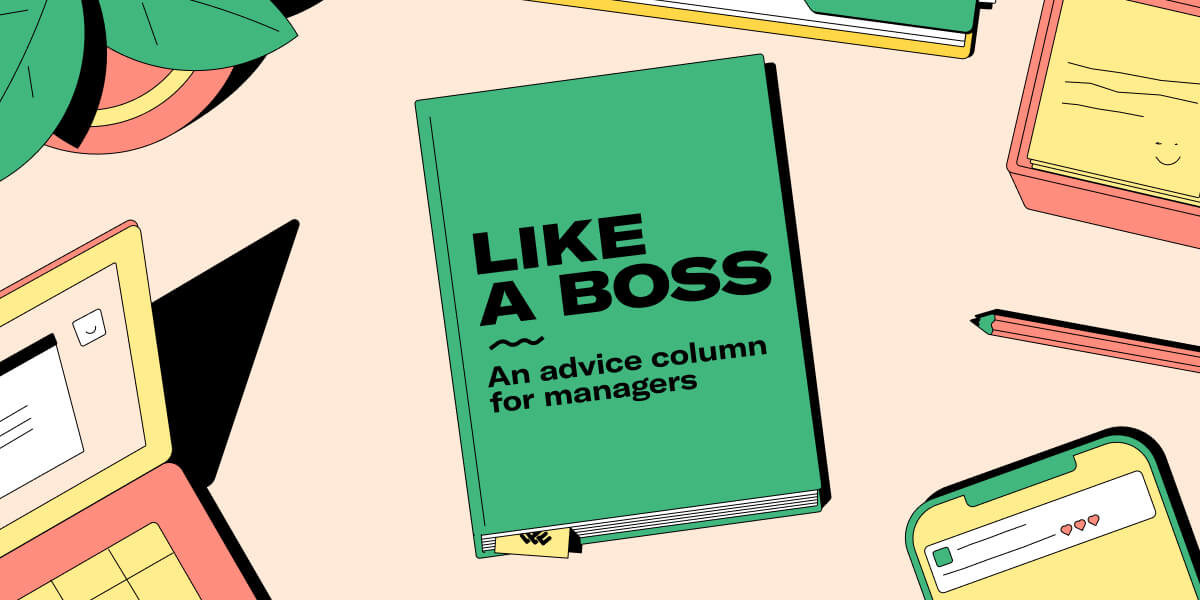The 1:1 is a critical part of an employee-manager relationship and a cornerstone of the modern workplace. Regular 1:1 meetings are “one of the most important productivity tools you have as a manager” according to Elizabeth Grace Saunders, the author of How to Invest Your Time Like Money.
No two 1:1 meetings will look exactly alike because they'll be tailored to each employee and their specific work and challenges. But regardless of which topics you are covering, there are a few meeting questions you should always ask in a 1:1 in order to maximize the check in process.
These open-ended questions set up the 1:1 with an employee-led meeting agenda rather than a manager-dictated one, which considerably ups the value of these meetings. This means it's a space for employees to bring up their thoughts, problems, and questions, which in turn helps managers figure out next steps on the employees' and company's long term goals, uncover issues with the team member or their team, and boost the overall performance of their teams. They also help managers and employees build a long-term relationship that's focused on employee development, meaning employees grow through their jobs, improve in their work, and develop skills that they'll use throughout their careers.
Whatever your management style, a good manager knows adding great questions to your meeting template are an easy way to up your 1:1 game. Even managers with great rapports with their direct reports can benefit from these questions -- they keep you from the biggest time wasters: unfocused, incoherent conversations that don't help either you or your employee. At the same time you don't want the conversation to be so structured as to lose the loose conversation that yields insight -- in that case, less direction is better.
Instead, use these questions for a great one-on-one meeting agenda: one where you get to know your employees better and signal loud and clear that you, as a manager, are committed to making the best team possible.
1. How's it going?
Opening with a simple “How's it going?” puts your employee front and center and sets the tone for your 1:1. While the most efficient start to a meeting is to jump right into action items, this gives you an opportunity to get to know your direct reports better and opens space for them to talk about what's most important to them.
Some employees might be reticent or offer a one-word answer: “Good,” and not much else. If this is the case, try gently prompting further by saying:
- That's good to hear... what has been going well?
- That's good to hear, how have things been at work?
- That's good to hear, anything new happen since our last meeting?
These acknowledge your employee's feelings and nudge them to elaborate. Sometimes people just need tacit permission to talk through their experiences.
Plus, taking a few minutes at the beginning of a 1:1 to let casual conversation flow is an easy way to work on your “people skills.” If that's an aspect of your job that doesn't come naturally to you, know that asking good questions (and getting out of the office environment to do it) during 1:1s make a huge impact on your employees' wellbeing. Depending on your employee, talking about your employee's personal life or work/life balance can make it more natural for them to open up about career conversations -- or vice versa. It shows you value what they have to say, which build trust between the manager and the employee, an essential element of employee engagement. Knowing your employees well also helps you assign work, motivate them, and help develop their careers.
2. What's your biggest roadblock right now?
Asking employees to tell you about their roadblocks should happen in every 1:1. Without knowing what's challenging them at that moment, you can't know the best way to help them reach their goals. Maybe they're overwhelmed, but maybe, like 33% of employees, they're actually underwhelmed and don't feel challenged. These are the types of insights you can expect to receive from asking this question in every 1:1. These are also things that may be too hard to articulate in a status update, but perfect for a 1:1. Asking the right things every time and hearing how a situation has progressed since last week (or whenever the first time your employee brought up the situation) will also help you help the employee build an action plan that's more effective.
While an employee may articulate their challenges clearly, you may need to help them discover causes and solutions by asking how they've tackled the challenges thus far and what has (and hasn't) been working. It can also help you see how you can encourage or help your employee. There's a reason you ask these questions during 1:1s rather than team meetings -- you can't have great conversations about an employee's career goals or their current career development with their coworkers present.
As your employee speaks, listen closely to the answer because it'll tell you about much more than what stands in your employee's way. It may tell you:
- What they view as a priority
- What skills they don't feel comfortable with
- What processes they may find inefficient or broken
- What customers are at risk
- What team or project needs extra attention
Rather than asking about each of these items in a list, just listen. Ask follow-up questions, but try to glean this information while also hearing their personal perspective on the situation. Sometimes that means following up on what they brought up last time, or bringing up a recent situation next time to see how things panned out. Asking it every 1:1 also helps you build an agenda for the next meeting in real time.
3. Is there anything else?
No matter what you discussed during the 1:1, before you sign off you should end with “Is there anything else?” according to David Hauser, founder of Grasshopper, in his 2017 SaaSFest talk.
Hopefully, you've had a productive meeting and covered all the relevant points you wanted to hit. But often, employees may have problems, ideas, or questions that they don't deem “important” enough to lead off a meeting with or bring up as a response to a question about what is most pressing. The hard work of a one-on-one is sometimes just getting them to surface those concerns.
By saving a few minutes at the end of your 1:1, you can give them a chance to bring up questions, concerns, or ideas that don't fit into your more structured conversation. Even if the end of the 1:1 isn't the perfect time to start talking on the subject, it's important that your employee brings it up at all.
It can also be a time when people bring up something they may not have felt comfortable opening with. At the end of a 1:1, they've chatted with you, seen your reaction to their problems, and have built up a rapport. You probably don't talk to every one of your employees every day, and they may need a little time to warm up before they throw out something that's been on their mind, especially if it isn't explicitly related to a project or goal.
You'll never know if you don't ask
1:1s are a great chance to do some in-the-trenches people management and one of the best opportunities you have to listen to your employees. This starts and ends with asking questions that put employees in the driver's seat and open up the floor to whatever they have to say.
Keep an open mind and focus on listening to what your employees are doing, how they're feeling, and what they're getting out of their work. Although you may have your own agenda for the meeting, it should be flexible and roll with your employees' needs.
If you want to become a 1:1 rock star, check out our Ultimate Guide to One-on-Ones, which will help you go from good to great.







